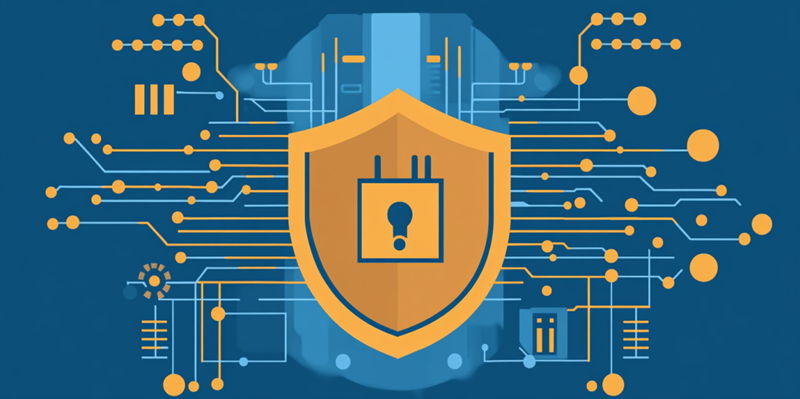In today’s rapidly evolving digital landscape, maintaining robust cybersecurity defenses is a critical concern for organizations of all sizes. The fast-paced development of technology brings with it a host of new threats and vulnerabilities, making traditional methods of network penetration testing increasingly insufficient. Traditional penetration testing, often driven by regulatory and cyber insurance requirements, typically follows a rigid, scheduled approach. While this may help meet compliance standards, it fails to adequately address the persistent and dynamically changing threats posed by malicious hackers who operate without regard to schedules. To effectively counter these ever-present dangers, more frequent and proactive testing is essential. This realization has led to the growing advocacy for year-round, automated network penetration testing as a fundamental practice for robust cybersecurity.
Limitations of Traditional Penetration Testing
Traditional penetration testing, carried out by specialized consultants, has several inherent limitations that make it an inadequate stand-alone defense mechanism in the modern cyber environment. Firstly, consultant-driven penetration testing is often beset with high costs due to the manual nature of the work and the expertise required. These tests typically take about a month to complete, from initiation to final report delivery. This prolonged process means that by the time the results are made available, they risk being outdated due to the continuous evolution of network configurations and emerging vulnerabilities.
The costly and time-consuming nature of traditional penetration testing creates significant barriers for frequent testing. As a result, organizations may limit testing to once or twice a year, leaving potentially exploitable gaps open for extended periods. Furthermore, the scheduling and consultant availability constraints contribute to delays in addressing vulnerabilities, leaving networks exposed and susceptible to attacks. The static nature of this approach is fundamentally misaligned with the dynamic threat landscape, where new exploits are discovered daily and attack vectors continually evolve. This misalignment necessitates a shift towards more agile and responsive testing methodologies.
Cost-Effectiveness and Efficiency of Automated Pen Testing
An effective solution to the limitations of traditional penetration testing lies in the adoption of automated network penetration testing. Automated solutions not only significantly reduce costs but also enhance the frequency and responsiveness of security assessments. This cost-effectiveness is underscored by studies showing that automated pen testing can cut expenses by more than 60% compared to traditional methods. Such financial savings allow organizations to allocate resources towards other critical areas of cybersecurity or increase the frequency of their testing regime.
In addition to cost savings, automated penetration testing offers remarkable efficiency. Unlike the lengthy month-long process of traditional testing, automated pen tests can deliver results within days. The capability to schedule these tests as needed, independent of consultant availability, facilitates real-time assessment and remediation of vulnerabilities. This agility enables organizations to continuously monitor and enhance their security posture, ensuring that defenses are up to date and capable of countering the latest threats. Automated testing solutions also provide comprehensive reports and real-time tracking features, fostering greater transparency and faster response times.
Transitioning to a Proactive Defense Strategy
The shift toward year-round automated penetration testing marks a significant transition from a compliance-focused approach to a proactive defense strategy. Traditional penetration testing often falls into the trap of merely checking compliance boxes, focusing on meeting external requirements rather than genuinely bolstering security defenses. By contrast, incorporating automated testing as a continuous practice emphasizes identifying and addressing vulnerabilities in real-time, thereby minimizing the window of opportunity for potential attackers.
Frequent, automated testing empowers organizations to stay ahead of cyber threats by promptly identifying and mitigating weaknesses. This proactive stance diminishes the reliance on predetermined schedules and fosters a security culture that is consistently responsive to the latest threat intelligence. Reports from automated tests provide actionable insights that enable swift remediation, reducing exposure and enhancing the overall security posture of an organization. By adopting this forward-thinking approach, companies can better protect their networks, data, and ultimately, their reputation.
Conclusion: The Case for Year-Round Automated Pen Testing
Traditional penetration testing has significant limitations that can be addressed through the use of automated network penetration testing. Automated solutions not only drastically lower costs but also help in conducting security assessments more frequently and responsively. Studies highlight that automated pen testing can reduce expenses by over 60% compared to traditional methods. The financial savings allow organizations to allocate resources to other crucial cybersecurity areas or to increase the frequency of their testing routines.
Besides cost efficiency, automated penetration testing is remarkably fast. Traditional testing can take a month, while automated pen tests can yield results in days. These tests can be scheduled as needed regardless of consultant availability, enabling real-time vulnerability assessments and remediation. This flexibility allows organizations to continuously monitor and improve their security posture, ensuring defenses are up to date against the latest threats. Automated solutions also offer detailed reports and real-time tracking features, which enhance transparency and accelerate response times.

